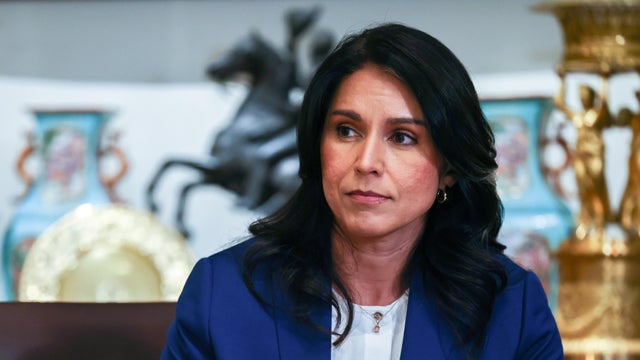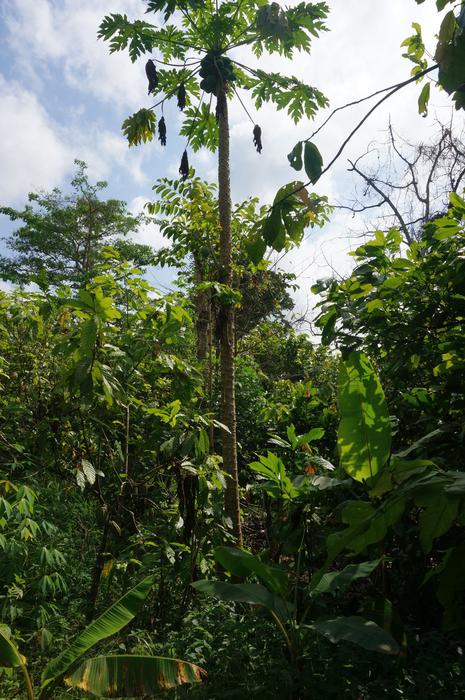World’s first commercial carbon storage facility begins operations, injecting CO2 deep under North Sea seabed – CBS News

Report on the Northern Lights Carbon Capture and Storage Initiative and its Alignment with Sustainable Development Goals
Introduction: A Milestone in Climate Action Technology
The Northern Lights consortium has announced the inaugural injection of carbon dioxide (CO2) into a sub-sea reservoir off the Norwegian coast, marking the launch of the world’s first commercial cross-border carbon capture and storage (CCS) service. This initiative represents a significant technological step towards achieving SDG 13 (Climate Action) by providing a mechanism to prevent industrial greenhouse gas emissions from entering the atmosphere. The project, a partnership between Equinor, Shell, and TotalEnergies, is designed to support Europe’s transition to a low-carbon future.
Project Framework: Fostering Innovation and Partnerships for the Goals
The operational model of the Northern Lights project is a direct contribution to several Sustainable Development Goals, primarily through its innovative infrastructure and collaborative nature.
- SDG 9 (Industry, Innovation, and Infrastructure): The project establishes a new value chain for climate mitigation, building resilient infrastructure to support sustainable industrialization. It provides a decarbonization pathway for essential but hard-to-abate industries like cement and steel.
- SDG 17 (Partnerships for the Goals): As a joint venture between major energy corporations and with significant financial backing from the Norwegian state, Northern Lights exemplifies a multi-stakeholder partnership mobilizing technology and financial resources to address a critical global challenge.
The process involves a multi-stage logistical and technological chain:
- CO2 is captured from industrial sources across Europe.
- The captured CO2 is liquefied and transported via custom-built ships to a terminal in Oygarden, Norway.
- From the terminal, the liquefied CO2 is injected through a 110-kilometer pipeline for permanent storage in a geological formation 2,600 meters beneath the North Sea seabed.
Addressing Industrial Emissions and Responsible Production
The project’s primary objective is to mitigate industrial emissions, a key target for SDG 12 (Responsible Consumption and Production) and SDG 13 (Climate Action). The Intergovernmental Panel on Climate Change (IPCC) and the International Energy Agency (IEA) recognize CCS as a necessary tool for industries where emissions are difficult to eliminate through other means.
Current Operations and Commercial Viability
- The first CO2 stored originates from the Heidelberg Materials cement plant in Norway.
- Commercial agreements are in place with Yara (ammonia, Netherlands), Orsted (biofuels, Denmark), and Stockholm Exergi (thermal power, Sweden).
- Initial storage capacity is 1.5 million tons of CO2 per year, with plans to expand to over 5 million tons by 2030.
Challenges and Critical Perspectives on Sustainable Development
Despite its potential, the role of CCS technology in achieving long-term sustainability goals, particularly SDG 7 (Affordable and Clean Energy), remains contentious. Several challenges and criticisms have been raised:
- Economic Viability: The high cost of CCS technology currently makes it less profitable for industries than purchasing emissions permits on the European carbon market, hindering widespread adoption without significant subsidies.
- Efficacy and Motivation: Critics, such as Stanford University’s Professor Mark Jacobson, argue that CCS is an inefficient solution that diverts resources from the deployment of renewable energy sources.
- Risk of Delayed Transition: A major concern is that CCS could be used by the fossil fuel industry to prolong the use of polluting energy sources, thereby delaying the fundamental energy system transformation required to meet the goals of the Paris Agreement and SDG 7. Professor Jacobson notes that the primary beneficiaries and proponents of this technology are fossil fuel companies, suggesting it serves to perpetuate existing business models rather than foster a genuine shift to clean energy.
Analysis of Sustainable Development Goals in the Article
-
SDGs Addressed in the Article
The article on the Northern Lights carbon capture and storage (CCS) project addresses several Sustainable Development Goals (SDGs) due to its focus on climate change mitigation, technological innovation, energy systems, and international cooperation.
-
SDG 13: Climate Action
This is the most central SDG addressed. The entire purpose of the Northern Lights project is to “help halt climate change” by capturing CO2 emissions from industrial sources and preventing them from being “released into the atmosphere.” The article explicitly mentions that CCS technology is recognized as a “climate tool” by the IPCC and IEA.
-
SDG 9: Industry, Innovation, and Infrastructure
The article describes a major technological and infrastructural innovation. The project is the “world’s first commercial service offering carbon storage” and involves complex infrastructure, including ships for transport, a terminal, large tanks, and a “68-mile pipeline” to inject CO2 into the seabed. This represents a significant effort to upgrade industrial processes for sustainability, particularly for “industries such as cement and steel that are difficult to decarbonize.”
-
SDG 7: Affordable and Clean Energy
The article touches upon the broader energy debate. While CCS is presented as a solution to mitigate emissions from existing industries, the text also introduces a counterargument from Professor Mark Jacobson, who advocates for focusing efforts on “switching to clean energy sources.” The mention that the “U.S. gets about 60% of its electricity from fossil fuels” highlights the ongoing reliance on energy sources that CCS aims to make cleaner, connecting the project directly to the global energy mix and the transition to cleaner energy.
-
SDG 17: Partnerships for the Goals
The project is a clear example of a multi-stakeholder partnership. It is operated by the “Northern Lights consortium,” which includes “oil giants Equinor, Shell and TotalEnergies.” Furthermore, it is “Largely financed by the Norwegian state,” demonstrating a public-private partnership. The project’s scope is international, involving the transport of CO2 “across Europe” and commercial contracts with companies in the Netherlands, Denmark, and Sweden, highlighting cross-border cooperation to achieve a common environmental goal.
-
-
Specific Targets Identified
Based on the article’s content, several specific SDG targets can be identified:
-
Target 13.2: Integrate climate change measures into national policies, strategies and planning
The Norwegian state’s significant financing of the Northern Lights project demonstrates the integration of climate change mitigation strategies into its national planning and investment. The project is a concrete action to reduce emissions, aligning with national and international climate goals.
-
Target 9.4: Upgrade infrastructure and retrofit industries to make them sustainable
The project’s core function is to provide infrastructure to help industries like cement (“Heidelberg Materials cement plant”) reduce their CO2 footprint. This is a direct application of retrofitting and upgrading industrial processes to make them more environmentally sustainable by managing their emissions.
-
Target 7.a: Enhance international cooperation to facilitate access to clean energy research and technology
The Northern Lights project, while focused on emissions from fossil fuels, is a form of clean technology aimed at mitigating climate impact. The consortium of European energy companies and its service to clients across Europe (Germany, Netherlands, Denmark, Sweden) is a form of international cooperation to deploy and scale up this climate technology.
-
Target 17.17: Encourage and promote effective public, public-private and civil society partnerships
The structure of the Northern Lights project perfectly matches this target. It is a public-private partnership (“Largely financed by the Norwegian state” and led by a consortium of private companies like “Equinor, Shell and TotalEnergies”) built on a shared objective of sustainable development.
-
-
Indicators Mentioned or Implied
The article provides several quantitative and qualitative indicators that can be used to measure progress towards the identified targets:
-
Amount of CO2 stored or storage capacity
The article states that Northern Lights has an “annual CO2 storage capacity of 1.7 million tons,” which is planned to “increase to 5.5 million tons by the end of the decade.” This is a direct, measurable indicator of the project’s contribution to climate change mitigation (Target 13.2) and the scale of the sustainable infrastructure (Target 9.4).
-
Number of commercial partnerships and contracts
The text mentions that “Northern Lights has so far signed just three commercial contracts in Europe.” This number serves as an indicator of the adoption and economic viability of the technology, reflecting the effectiveness of the public-private partnership model (Target 17.17) and the industry’s willingness to invest in sustainable retrofitting (Target 9.4).
-
Level of public and private investment
The fact that the project is “Largely financed by the Norwegian state” is an indicator of government financial commitment to climate action (Target 13.2). The involvement of major oil companies also indicates significant private sector investment, relevant to measuring partnership effectiveness (Target 17.17).
-
Share of fossil fuels in the energy mix
The statistic that “the U.S. gets about 60% of its electricity from fossil fuels” is an implied indicator. It provides a baseline context for the urgency and scale of the challenge that technologies like CCS or renewable energy sources are trying to address, relevant to SDG 7’s goal of transitioning to cleaner energy.
-
-
Summary Table of SDGs, Targets, and Indicators
SDGs Targets Indicators SDG 13: Climate Action 13.2: Integrate climate change measures into national policies, strategies and planning. - Annual CO2 storage capacity (1.7 million tons, rising to 5.5 million tons).
- Level of state financing for climate mitigation projects.
SDG 9: Industry, Innovation, and Infrastructure 9.4: Upgrade infrastructure and retrofit industries to make them sustainable. - Inauguration of the world’s first commercial CO2 storage service.
- Number of industrial clients (e.g., cement, biofuel plants) using the service.
SDG 7: Affordable and Clean Energy 7.a: Enhance international cooperation to facilitate access to clean energy research and technology. - International consortium (Norway, UK, France) developing and operating the technology.
- Share of fossil fuels in the energy mix (e.g., 60% in the U.S.) as a baseline for action.
SDG 17: Partnerships for the Goals 17.17: Encourage and promote effective public, public-private and civil society partnerships. - Formation of the Northern Lights consortium (Equinor, Shell, TotalEnergies).
- Significant financing from the Norwegian state (public-private model).
- Number of international commercial contracts signed (3).
Source: cbsnews.com

What is Your Reaction?
 Like
0
Like
0
 Dislike
0
Dislike
0
 Love
0
Love
0
 Funny
0
Funny
0
 Angry
0
Angry
0
 Sad
0
Sad
0
 Wow
0
Wow
0



















































.jpg.webp?itok=0ZsAnae9#)

























